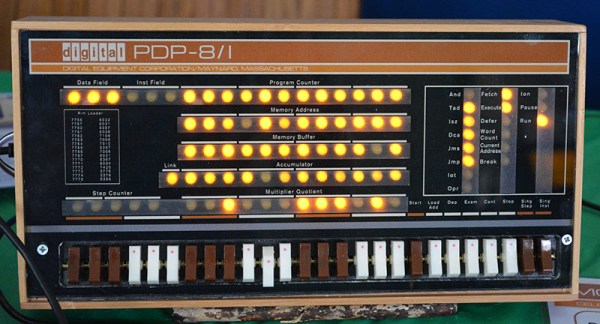The Vintage Computer Festival in Wall, New Jersey doesn’t just attract locals; [Oscar] came all the way from Switzerland to show off his PiDP-8/I. It’s a miniature minicomputer, emulated in SimH, with blinkenlights and toggle switches mounted to a Raspberry Pi Hat.
Although the PiDP-8 is emulating a machine with thousands of discrete transistors, the design is exceptionally simple. On the board is 92 LEDs, a bunch of diodes, 26 toggle switches, a driver chip, and that’s about it. All the multiplexing for the switches and LEDs is taken care of in software. On the Raspberry Pi side, [Oscar] is able to run FOCAL, OS/8, and, like a normal-sized PDP-8, can toggle in programs manually.
Instead of having connecting to the ribbon cables coming out of RK01 disk drives and DECtapes, [Oscar] is emulating those too. All the files that would reside on old Digital storage mediums are now stuffed into USB thumb drives. A USB hub is plugged into the Pi, and when one of these USB disk packs is plugged into the hub, loading an operating system or a program is just a matter of flicking a few toggle switches.
[Oscar] has been working hard to turn the PiDP-8 into a kit, and the word around the booths is that this will happen sometime this summer. The expected price for this kit is very interesting: somewhere between $100 and $150 USD. For that price, we’d expect someone to rig up an Arduino-based paper tape reader very quickly, perhaps this afternoon.
More pics and a video of the PiDP-8/I below.
Continue reading “VCF East X: Minicomputing With The Raspberry Pi”




 [Oscar] says he’ll be bringing his PiDP to the
[Oscar] says he’ll be bringing his PiDP to the 









